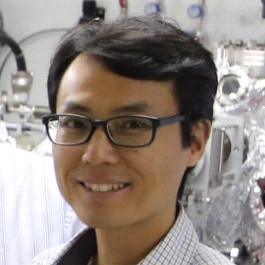
Spin-Orbit Technologies: From Magnetic Memory to Terahertz Generation
Spintronic devices utilize an electric current to alter the state of a magnetic material and thus find great application in magnetic memory. Over the last decade, spintronic research has focused largely on techniques based on spin-orbit coupling, such as spin-orbit torques (SOTs), to alter the magnetic state. The phenomenon of spin-orbit coupling in magnetic heterostructures was also recently used to generate terahertz emission and thus bridge the gap between spintronics and optoelectronics research.
I will introduce the basic concepts of SOTs, such as their physical origin, the effect of SOTs on a magnetic material, and how to quantitatively measure this effect [1], [2]. Next, I will discuss the latest trends in SOT research, such as the exploration of novel material systems like topological insulators and two-dimensional materials to improve operation efficiency [3]. Following this, some of the technical challenges in SOT-based magnetic memory will be highlighted. Moving forward, I will introduce the process of terahertz generation in magnetic heterostructures [4], where the spin-orbit coupling phenomenon plays a dominant role. I will discuss the details of how this terahertz emission process can be extended to novel material systems such as ferrimagnets [5] and two-dimensional materials. The final section will focus on how the terahertz generation process can be used to measure SOTs in magnetic heterostructures, thus highlighting the interrelation between terahertz generation and the SOTs, which are linked by the underlying spin-orbit coupling.
[1] X. Qiu, Z. Shi, W. Fan, S. Zhou, and H. Yang, “Characterization and manipulation of spin orbit torque in magnetic heterostructures,” Adv. Mater., vol. 30, 1705699, Apr. 2018.
[2] Y. Wang, R. Ramaswamy, and H. Yang, “FMR-related phenomena in spintronic devices” J. Phys. D: Appl. Phys., vol. 51, 273002, Jun. 2018.
[3] R. Ramaswamy, J. M. Lee, K. Cai, and H. Yang, “Recent advances in spin-orbit torques: Moving towards device applications” Appl. Phys. Rev., vol. 5, 031107, Sep. 2018.
[4] Y. Wu, M. Elyasi, X. Qiu, M. Chen, Y. Liu, L. Ke, and H. Yang, “High-performance THz emitters based on ferromagnetic/nonmagnetic heterostructures” Adv. Mater., vol. 29, 1603031, Jan. 2017.
[5] M. Chen, R. Mishra, Y. Wu, K. Lee, and H. Yang, “Terahertz emission from compensated magnetic heterostructures,” Adv. Opt. Mater., vol. 6, 1800430, Sep. 2018.
Biography
Hyunsoo Yang obtained the bachelor’s degree from Seoul National University. He worked at C&S Technology, Seoul, Korea; LG Electronics, San Jose, Calif.; and Intelligent Fiber Optic Systems, Sunnyvale, Calif. In 2006, he received the doctorate from Stanford University, where he worked on optoelectronic devices. From 2004 to 2007, he was at the IBM-Stanford Spintronic Science and Applications Center. He is currently a GlobalFoundries chaired associate professor in the Department of Electrical and Computer Engineering, National University of Singapore, working on various magnetic materials and devices for spintronics applications. He has authored 170 journal articles, given 100 invited presentations, and holds 15 patents. He won the Outstanding Dissertation Award for 2006 from the American Physical Society’s Topical Group on Magnetism and Its Applications.
(*) Hyunsoo Yang is one of the 4 persons of the program “Distinguished Lectures” selected by the IEEE Magnetics Society for 2019
